I enter the country under difficult circumstances. In the weeks leading up to my arrival in Myanmar, large street protests led by monks – and later supported by the general public – are headlining international news broadcasts across the globe.The protests were sparked initially over the removal of Myanmar’s fuel subsidy, resulting in a significant rise in fuel costs.
The resulting crackdown by the Myanmar’s military junta, have claimed several lives – including that of a Japanese journalist – with many thousands arrested and detained.
The only way to enter Myanmar is via Yangon airport. On contacting Air Asia – one of the few airlines who fly here and with whom I had pre-booked a flight – they echoed the Australian Government Embassy’s advice: ‘ we advise against any unneccessary foreign travel’.
YANGON, MYANMAR
Myanmar’s capital – formerly known as Rangoon – comprises approx 5 million of the country’s 53 million population. Antiquated, bland and deteriorating buildings surrounded by a sea of telephone wires, a scene not dissimilar to any other large city in SE Asia. There are though several striking differences – including the splendid gold topped stupa’s – that would leave an unsuspecting visitor second guessing what continent they were on:
- Incredibly, no motorbikes! Apart from the odd military official, motorbikes – the preferred mode of transport in SE Asia – are banned in the capital. The resulting ‘quiet’ is initially disarming, but does wonders for pedestrian access around the city.
- Large trees line seemingly every street, providing not only much-needed shade from the tropical heat, but gives the city a ‘softer’ feel than that offered from the grey brick architecture. In May 2008, Cyclone Nargis would wreck massive devastation across the Myanmar Delta, killing tens of thousands and destroying a large percentage of the trees described above.
- A snap decision by the Myanmar government for all vehicles to drive on the right hand side of the road, but continuing to import ex-Japanese vehicles with right hand drive! Having to advise the taxi driver from the airport, when it was safe to overtake is a little disconcerting.
The peak tourist season has started and my guesthouse has 28 staff to service what should be 40+ guests. With tourists reluctant to visit Myanmar after recent events, the guesthouse has less than 10 guests. The loss of jobs and income this season from a crucial industry will be significant; I’m already sensing a general bitterness towards the incumbent military government.
Shwedagon Paya is one of the most incredible structures I have ever witnessed. An ‘icon’ symbol not just for Yangon, but for all of Myanmar, an absolutely stunning complex.
The four long, art adorned, peak covered walkways leading in to the main structure are spectacular in their own right. Then the outer complex comprising numerous structures and pavilions, all beautifully coloured and decorated with intricate wood carvings. Incredibly the whole complex is set on a marble floor.
Then the ‘Pièce de résistance’, the centre showpiece. A 98 metre high, 1000 year old stupa, surrounded by 60 smaller cousins, covered in real gold (or say they say). The sun reflecting off the gold is memorizing, but to witness at night under lights is just gorgeous.
It is said to contain several tonnes of gold, thousands of diamonds and numerous other gems. Whether these treasures still remain intact is questionable given the integrity of the current Government.
Shwedagon was a pivotal venue in recent weeks, the scene of many arrests and violence. Consequently there are now few monks in attendance and the local people were reluctant to converse for fear of who may be watching.
KYAIKTIYO/GOLDEN ROCK/BAGO, MYANMAR
In the small town of Kinpun – the access point for the Golden Rock – I am the only tourist. The truck leaves for the nearby mountain when the bench seats in the back are full, and after an 1 1/2 hour wait, we finally depart.
An important site for Burmese Buddhists, Golden Rock – said to be held in place by a single strand of Buddhas hair – is a large gold painted boulder perched delicately atop a high cliff face, affording spectacular views.
Arriving in Bago at 4.00pm, a young moto-driver pounces on me as I exit the bus. For USD$5, he offers to show me the temple sites in and around Bago and be back at the bus station in time for the 6.30pm bus to Mandalay. In addition he will avoid the USD$10 fee to visit the sites, of which all proceeds are paid directly to the Myanmar government. Initially sceptical and doubting his integrity, I eventually agree to his offer.
We visit two giant reclining Buddha statues – 55 metres long and 16 metres high! Four 30 metre high Buddha statues sitting back to back. The impressive Shwemawdaw Paya, similar in design to Shwedagon, but with far less extravagance, although it is 14 metres higher. We conclude with a visit to the snake monastery, where a monk is said to have been re-incarnated into a 200+ kg boa constrictor – an absolute monster.
Arriving back at the bus station, I shout my moto-driver dinner, regretful of my earlier misgivings and very appreciative of his efforts over the previous two hours.
Due to global financial sanctions on Myanmar, I have no access to cash, either via ATM, credit card, travellers cheque or money transfer. I enter Myanmar with what I anticipate is enough funds, hoping I don’t lose it. To make matters worse, a USD note with even a minor crease or soil mark is refused, leading to many frustrating confrontations during my time here. I exchange USD’s into Myanmar kyat via the black market, which offers a far better rate of exchange.
MANDALAY, MYANMAR
Arriving early morning in Mandalay – Myanmar’s 2nd largest city – after an awful 12 hour overnight bus trip, I take a much-needed sleep before an afternoon walk. Walking alongside the huge Ayeyarwady River, I witness several Hindu wedding processions.
With two other friends, I visit a Mandalay institution – the Moustache Bros. Three brothers teamed up some 30 years ago to perform traditional folk opera and comedy for the people of Mandalay. Their fierce criticisms of the military regime, often incorporated into their various acts, has seen them arrested and incarcerated more than once. One imprisonment included five years of hard labour.
In recent years with the help of family members, they now perform exclusively for tourists in English, utilizing traditional dance and comedy. They frequently stop to regale jokes at the government’s expense and on the wall hangs a picture of Aung San Suu Kyi – both of which are an arrestable offence.
Despite this overzealous crackdown, their contempt remains, determined to spread the message with regards to the situation in Myanmar. All this despite the risks – their father keeps watch outside the house while the ‘show’ is performed – truly courageous.
I along with two German friends, hired a taxi to visit the outlying sights of Mandalay. U Bein – the world’s longest teak span, some 1.2 kilometres across Taung Thaman Lake. Conversing with monks at a nearby monastery. The temple atop Sagaing Hill, looking down on the 500 surrounding stupas and offering glorious 360 degree views of Mandalay and beyond.
Finally to Inwa, an ancient island city, including an ageing teak monastery, containing 267 teak posts up to 18 metres high.
I find a new addiction in the form of a chapati stand cooking each night on a nearby street corner. Beautiful chapatis and mutton curry for USD$1.
HSIPAW/PYIN U LWIN, MYANMAR
For USD$45, my German friends and I hire a taxi for the five-hour trip to Hsipaw in lieu of ten hours on the bus.
Hiring a guide, we hike to nearby waterfalls and villages. Late afternoon, two of us cross the river and ascend a steep hill, we come across a small monastery with brilliant views of Hsipaw, with the river in the foreground and mountains behind, all under a stunning sunset. We share the views with five monks as they drink tea and smoke cheroots – they’re a little more liberal than their eastern cousins. The tourist visitor book reflects the terrible reality; with almost daily entries until late Sept – when the protests began – then not a single entry until our arrival. Today is the 24th October!
The highlight of the train to Pyin U Lwin is the 100+ year old bridge – built by the British – across a massive gorge. When built it was said to be the second highest railway bridge in the world. Crossing the bridge is quite a harrowing experience, and not just because the train slows to a crawl so as to not put any undue pressure on the structure. The bridge is so narrow, that when looking directly down out the window it can’t be seen, nothing but the river far below.
Unfortunately, as with all bridges in Myanmar, pictures are forbidden. My attempt to film or photograph from the train was met with a stern lecture – in Burmese – from the armed guard.
Due to the nearby academy, military personnel are conspicuous in Pyin U Lwin. Their influence and affluence (in comparison to their countrymen) evident with a multitude of British Colonial mansions – nearly all owned by the Myanmar government and converted to hotels – and taxi’s in the form of horse-drawn carriages and stage coaches.
Tonight is the October full moon, which marks the Festival of Lights. Each family ‘launches’ their own mini hot air balloon – a plastic bag above a suspended flame. Quite spectacular watching hundreds of flickering lights rising into the starry night sky.
The whole town is in festival mode and as I walk the main street after dark, two things are clearly evident. First, I appear to be the only tourist in town. Second, seemingly anyone is permitted – including small children – to light fireworks/firecrackers and fire/throw them at anyone or in any direction. I witnessed rockets launching out of shop front doors at a 45 degree angle!
Surviving the night, I hire a bicycle for the day and discover a golf course and driving range. After meeting and conversing with the golf pro and owner of the driving range, I hire sixty balls and clubs for USD$1.
I rode out to the Botanical Gardens with little expectation, my presumption is one gained from visiting other gardens in SE Asia, which have been a little underwhelming.
I spend four hours exploring 450 acres of the most incredible garden I could possibly have imagined. A huge lake with swans and water fountains. Immaculate lawns and gardens. Raised walkways through water marshlands and rainforest. The excellent bird aviary – came face to face with the majestic Great Hornbill bird. An extensive orchid garden.
This magnificent Botanical Garden can be admired from the top of a ten storey tower, explored on foot, an oversized golf cart or even atop an elephant.
MANDALAY, MYANMAR
The annual pagoda festival lights up the base of Mandalay Hill after dark. Excited children, a ferris wheel that spun incredibly fast, and a shooting gallery Myanmar style. The ‘ducks’ were matchbox sized paper cubes fired at with rubber bands, noted some very impressive techniques used to ‘flick’ the bands.
Hiring a trishaw driver the following day, I explore the inner sights of Mandalay:
- Kyauktawgyi Paya housing an eight metre, 900 tonne Buddha carved from a single piece of marble.
- Kuthodaw Paya surrounded by 729 marble slabs each housed in their own small stupa. The slabs are inscribed with the Buddha scripture, said to take a person 450 days at eight hours per day to complete.
- Buddha statues at any temple are covered in gold-leaf. I visit a workshop from where they are made and observe the incredibly laborious process that converts 2 oz’s of gold into thousands of gold leaves.
The long climb to the summit of Mandalay Hill for the sunset is one of the highlights of any visit to Mandalay. Descending back to my waiting trishaw driver, I meet a Burmese lady who teaches at a monastery on the outskirts of Mandalay. She extends an invitation to visit the school the following day.
In the morning she arranges for a friend to collect me from the guesthouse. I follow her on my pushbike to the school’s location.
From what I understand, the government no longer offers free education in Myanmar. This school – including high school – administered by a monastery, gives poor, abused and abandoned children the rare opportunity to gain an education. The school opened in 1993 with the assistance of a wealthy Australian, who still provides sponsorship in conjunction with a German organisation.
The school now has over 7000 students, with half in the morning and half in the afternoon. The children are on holidays, so the school was relatively quiet, but in an area only the size of a football field, must surely get incredibly noisy.
The Principal – a monk – was also on holidays, but they insisted I meet his brother and vice-principal whom is also a monk. Dressed in his robes he graciously offers me a tour of the school, including the newly completed medical clinic – I meet the doctors, the orphanage, teachers quarters, classrooms, computer rooms, carpentry school, and library. Aged in his sixty’s, I marvel at his enthusiasm and passion for the school and am humbled and grateful for the two hours I have in his company.
BAGAN, MYANMAR
With few tourists in the country, flights, tourists buses, and even the boat option down river to Bagan has been cancelled. Instead a nine-hour ride on a very old local bus, which was an impressive exercise in how many people can fit on a bus at once.
In a 42 sq kilometre area between the 11th and 13th centuries, some 4000 temples were built ranging in size from a garden shed to impressive structures several stories high. The guesthouses are situated in Nyaung U, three kilometres north of Old Bagan. In an effort to give Old Bagan a more authentic look and feel, inhabitants were given a weeks notice in 1990 to relocate to New Bagan some five kilometres away.
Hiring a bicycle, I explore some of the more notable temples spread across the plain; looking down from a high vantage point, they give the appearance of termite mounds. Newer temples are still being constructed by government officials to earn ‘merit’.
By day’s end it’s clear I have a stomach bug, which keeps me almost bedridden for a day and a half. Fussed over by the guesthouse staff, regularly bringing tea, food and offering to get medicine, I recover enough to venture out to the temples again on a bicycle.
I count only two buses carrying the older European tourists who stay in the high-end hotels in Old Bagan. In a normal season, the buses would total around twenty. In Nyaung U, I have a choice of five restaurants and I am always the sole diner. I lament the lack of conversation with fellow travellers, but my situation is trivial when compared to the hardships being endured as a direct result of the tourist ‘drought’.
KALAW/INLE LAKE, MYANMAR
The bus leaves Bagan at 3.30 AM, arriving eleven hours later in the mountain village of Kalaw. Situated over 1000 meters above sea level, the nights are noticeably cooler. I spend a day with a guide from the guesthouse, exploring the town and surrounding hillsides. We walk in the vicinity of a large military college, upon which he voiced his displeasure at the hypocrisy and unethical methods employed by their government.
The Buddhist Lent has just concluded and everyone in the village brings food to the monastery. Via two large loudspeakers, the monks chant in 2 hour shifts each, 24 hours a day for nearly a week. I find it quite soothing and reassuring, although in the early hours of the morning it loses its shine.
The stomach bug returns late that evening, so the following day is one of bed confinement instead of a planned mountain trek.
Nyaungshwe is five kilometres via boat from the 22 kilometre by 11 kilometre Inle Lake. The people here are famous for their leg-rowing technique. Propelling their flat-bottomed wooden boats by wrapping one leg around the oar.
Hiring a boat and guide, a whole day is needed to explore the Lake and it’s surrounds. Cruising past some of the expensive hotels catering for package groups, we visit several villages, each with their own cottage industry – pottery, cheroots, silversmith, rice wine, textiles. The villages are built over water, with small wooden boats used as transport; like an impoverished version of Venice. After lunching with monks at a monastery, I immerse myself in the large daily market, where mountain tribespeople exchange goods with those living around the lake.
Enjoying my own accommodation built over water, I stay another day, hire a bicycle and explore the countryside. Nyaungshwe has several impressive pizza and pasta restaurants offering respite from curries and rice.
YANGON/CHAUNGTHA BEACH, MYANMAR
Eighteen hour return journey to the capital – Yangon. Technically Yangon is no longer the ‘capital’ city. The government has recently constructed a brand new town in central Myanmar which is now the political capital. A little like Sydney/Canberra. This modern town is for government employees only and is off-limits to foreigners.
Despite its huge coastline, the majority of Myanmar’s beaches are in restricted areas. The few that are accessible often require flights in and offer only expensive resort style accommodation; Chaungtha is the exception.
With few tourists, I find a beautiful brick beach front bungalow with TV and balcony – USD$40 for a three night stay. Except for another return of the stomach bug – which is becoming a concern – I eat nothing but seafood.
Late in the afternoon, the locals converge onto the beach playing soccer, horse riding, kite flying or sitting in rubber tubes in the water. The beach was not the white sand of postcards, but was clean, long and wide – especially at low-tide- offering plenty of space for the afternoon activities.
Walking north away from the village and its inhabitants, the beach quality improves. After an hour of walking, I round a small headland to step onto a beautiful white sand, palm fringed beach stretching as far as the eye can see, and not a soul to be seen.
Difficult to leave such a beautiful relaxing location, but I have already overextended my permitted visa – which earns me an armed escort at the airport to the immigration office, for a stern lecture, a naughty stamp in my passport, and a USD$9 fine.
GENERAL
In this current political climate, the people of Myanmar will always leave the greatest impression on any visitor. Unique in appearance with the men universally wearing the ‘longyi’ – an ankle length skirt tied at the front and women wearing the ‘thanakha’ paste on their faces. Thongs are the footwear of choice, even well dressed staff at a relatively expensive restaurant.
A visit to Mae Sot in Thailand some three years earlier was the catalyst for my visit to this country, initiating a curiosity that was inspired by Myanmar’s most prominent citizen and 1991’s Nobel Peace Prize recipient – Aung San Suu Kyi. Under house arrest more or less since 1989, her story is both tragic and inspirational, and the respect and love she has in the general population is widespread.
The people of Myanmar have a lack of ‘voice’ and basic human rights that is obvious from the outset, especially after recent events.
- Protesting results in gaol and hard labour. Following the September protests, households were asked to ‘supply’ at least one family to participate in a pro-government rally. Failure to comply led to fines or arrests.
- Internet is severely restricted.
- Personal mail entering or leaving the country is opened for inspection – the postal service openly admits to it. I was given mail by an Australian living in the country to ‘sneak’ out with me and on forward to their family.
- Phone calls are also ‘eavesdropped’. A french girl I met rang her mother in France, a voice interrupted their conversation with ‘can you please speak in English!’
- Each time I check into a guesthouse, my passport is confiscated and delivered to the nearest government office for inspection and the details recorded.
The national newspaper – ‘The New Light of Myanmar’ – is an excellent example of the propaganda machine in action. Soon after the Japanese journalist was shot and killed during recent protests, an article was written and published which reflects this bias position; it read:
“It is impossible for security members to know who is who and to differentiate between nationals and foreigners in handling a protest. Indeed, Myanmar’s and Japanese are the same (in appearance), Asians, so the security members could not know immediately he was a Japanese and whether he was a protester or a correspondent. What is sure in that regard is that security members had to target the ones in front of the crowd to stop the protest. The Japanese correspondent caused his tragic end by getting among the protestors”.
When I first read it, I thought it was a joke. They are openly admitting that shooting to kill their own for conducting a peaceful protest is justified!
I may have seen poverty and oppression on a scale beyond what I had anticipated, but I also saw incredible potential. Tourism alone could match and even exceed that of its neighbour – Thailand. With pristine beaches, tropical islands and coral reefs in the south and snow-covered peaks forming the eastern end of the Himalaya’s in the north, all of it undeveloped, but off-limits to foreign visitors.
I fear for the health of these geographical gems, which includes the worlds largest teak forests and tiger reserves. On one particular bus trip I witnessed a stockpile of teak logs that defied belief, easily numbering in the thousands. Exploitation is a greater priority than conservation.
However the greatest potential in Myanmar lies beneath its soils and waters. Said to have massive oil and gas reserves, coupled with their geographic location wedged between the worlds largest populations – China and India. Both these countries must surely be hovering like vultures, ready to exploit this untapped treasure.
Inevitably the leaders of Myanmar will recognise this wealth potential and realise that making small fortunes on the back of foreign investment is more productive than robbing a population that has nothing left to give. When this time comes, they will no doubt be praised for ‘relaxing’ their political grip, but in reality, incredible wealth rather than the population’s welfare will be their prime motivation.
A one time supporter of sanctions imposed by the US and UN, I realise now they have achieved little and are a poor substitute for intelligent and meaningful dialogue.
China and India trade freely within Myanmar, so sanctioned products – such as coca cola – are readily available.
Myanmar is a step back in time, a South East Asia that once was. The history and culture are incredible; temples, stupas, and statues on a scale and extravagance beyond that of her Asian neighbours.
I am eternally grateful to the people of Myanmar, not just for their hospitality, but also the courage and spirit they have shown me. I am keen to return and explore the areas currently restricted, when they eventually allow access.
Any individuals with which I had a conversation regarding the military junta have not been identified, both at these people’s insistence and to protect their anonymity.
Link to my photo site:
http://www.flickr.com/photos/danthewanderer/sets/
THANK YOU FOR READING. COULD I ASK A FAVOUR? If you found this story interesting or useful enough for others to see, please share our love of the great outdoors and this beautiful planet via your social media - it all helps:
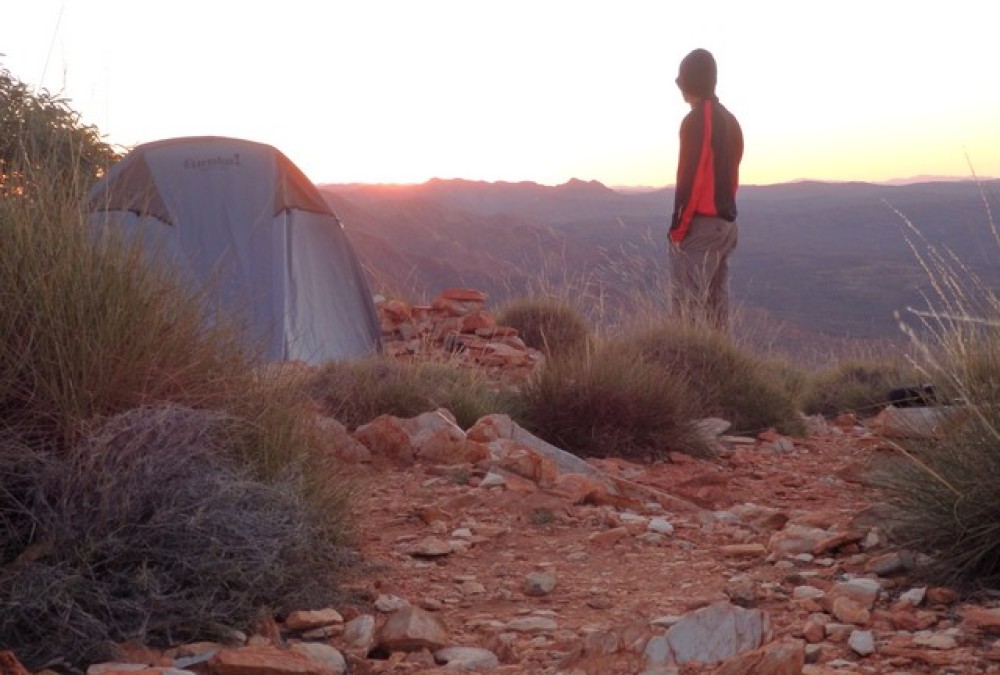
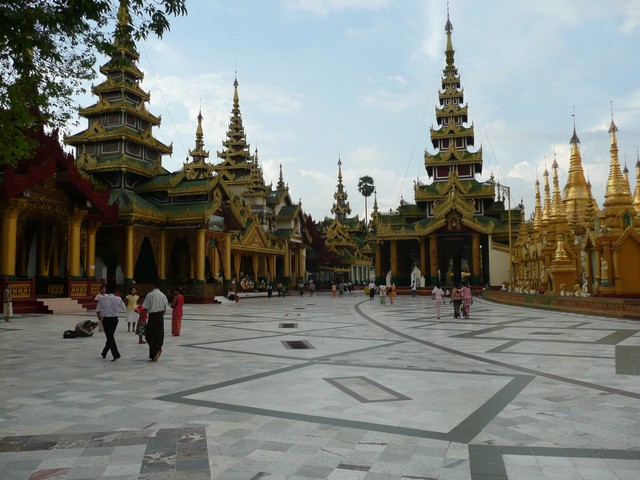
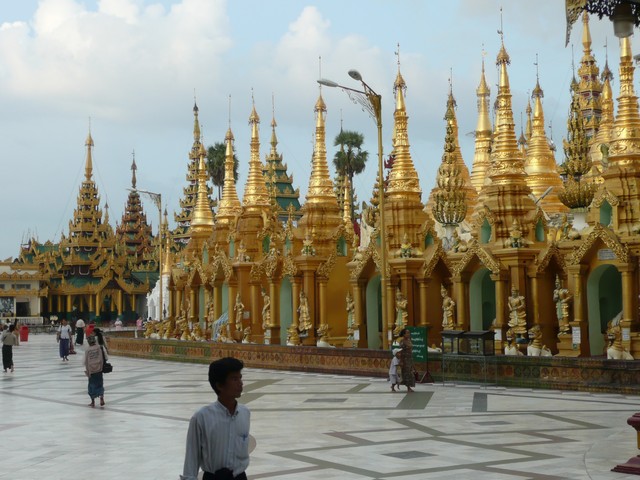
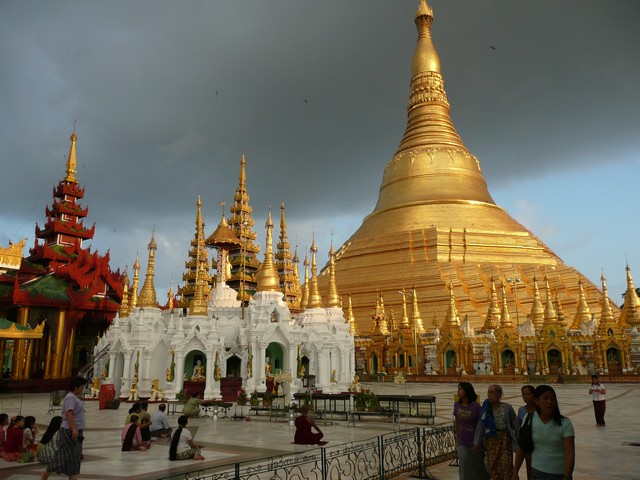
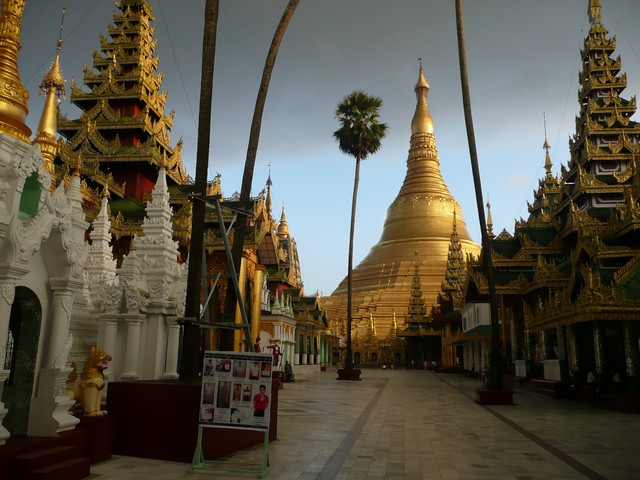
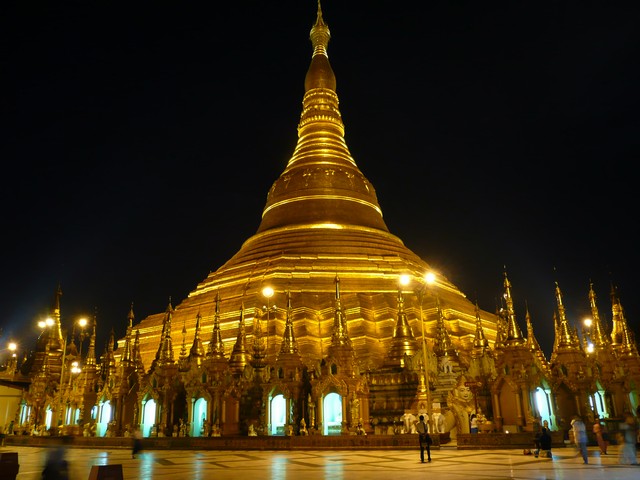

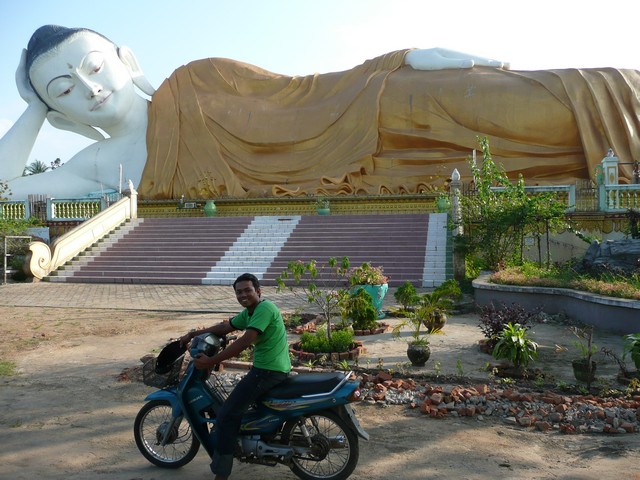

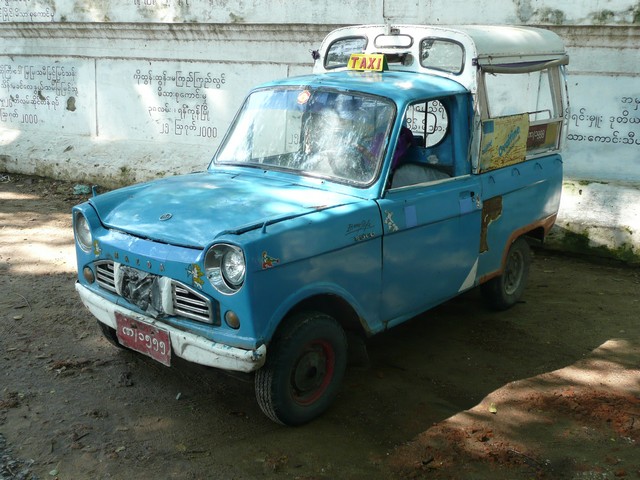
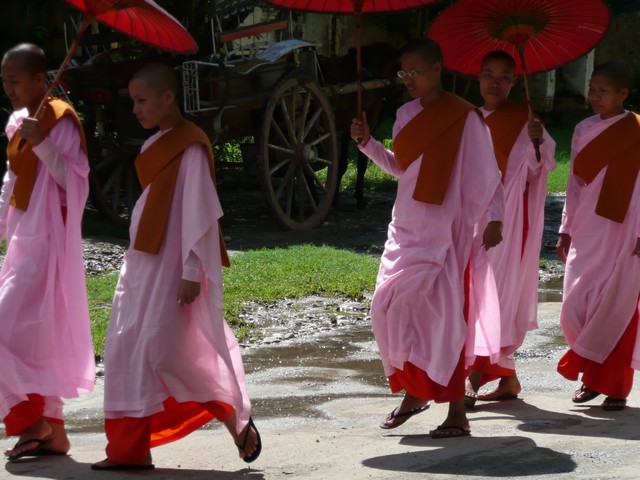
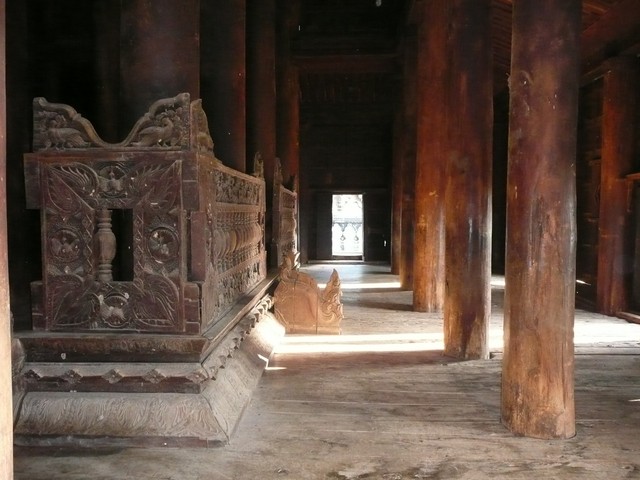
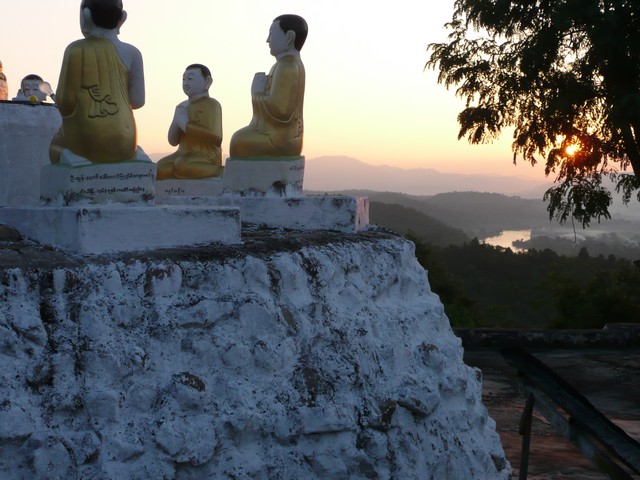
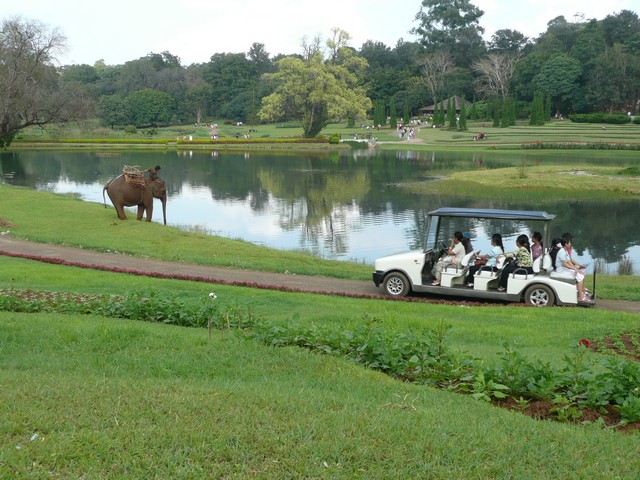
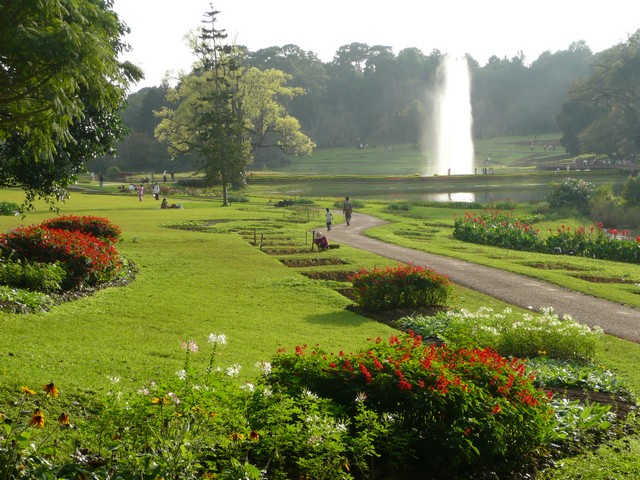
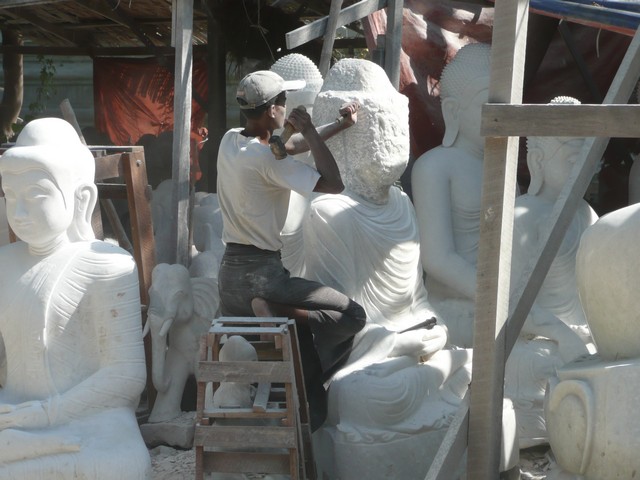
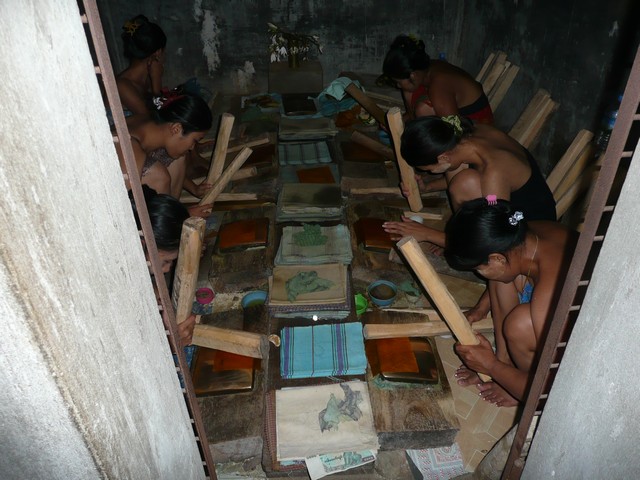
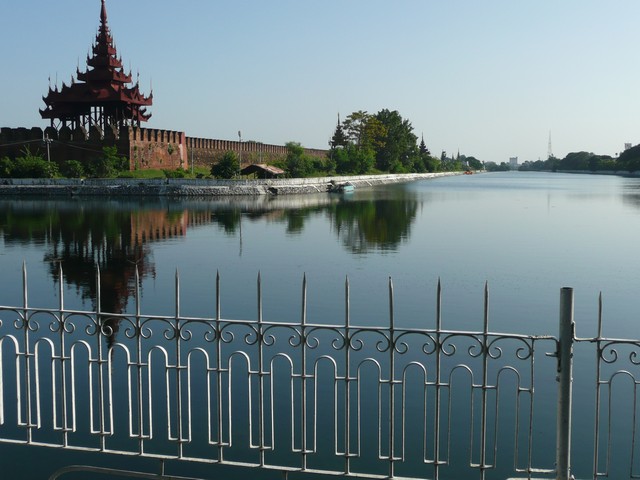
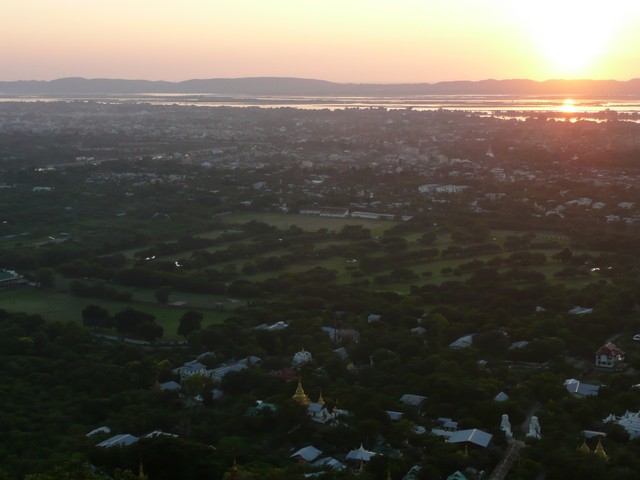
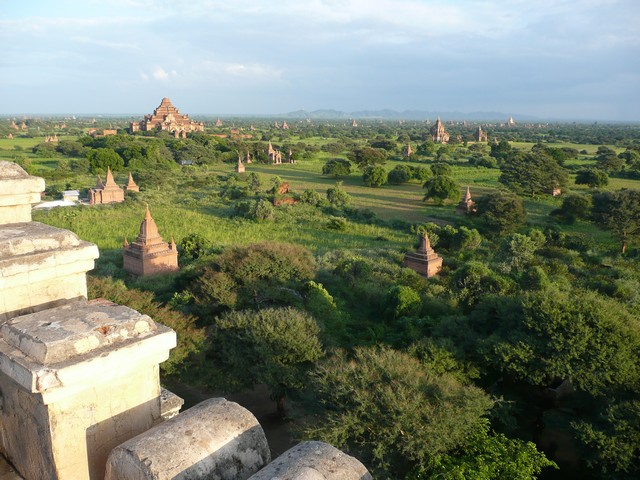
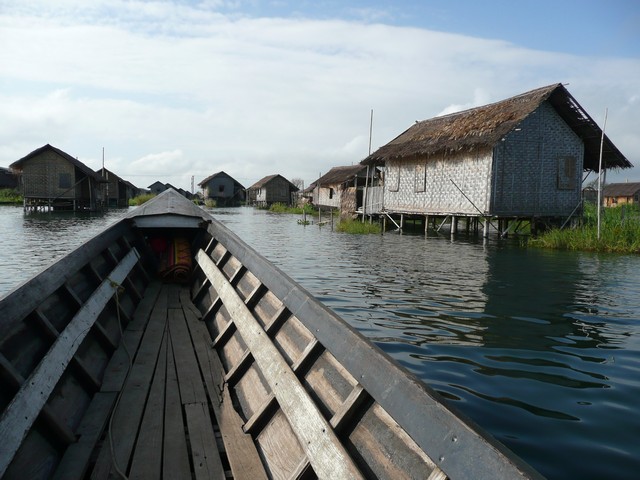
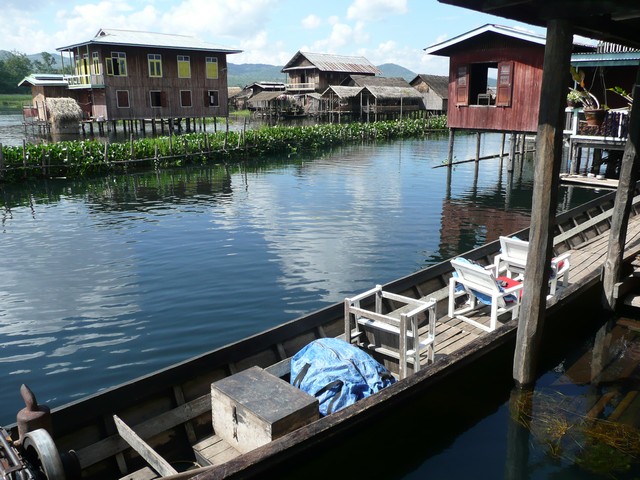
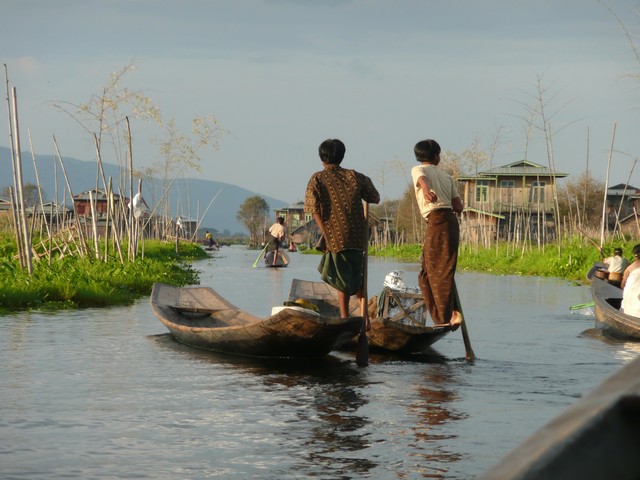
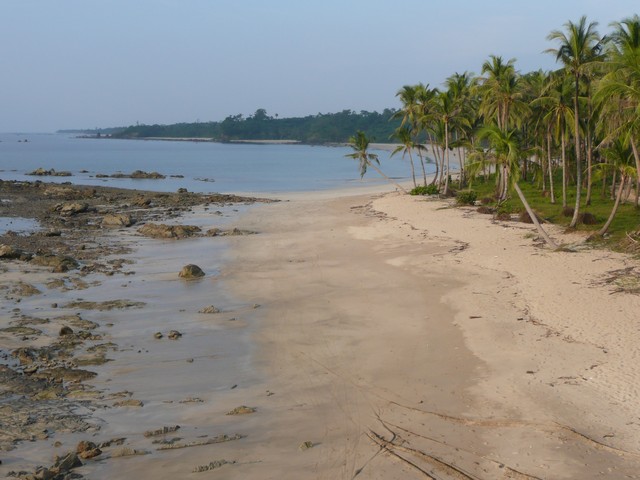
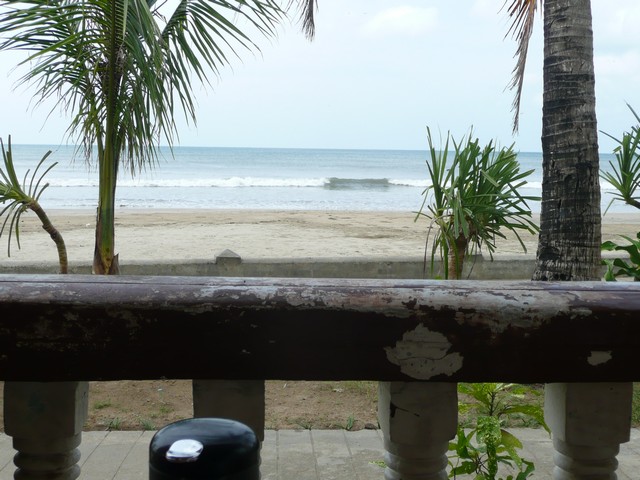
Nice piece! I enjoyed it greatly. I’m going to Myanmar in a few weeks and I was wondering how long it took you to visit all the places you mentioned.
Armand
Hi Alort,
Time in Myanmar about 30 days. Getting around is very slow, transport (ie buses) & roads are not great. Good option is to team up with others & hire a taxi. Enjoy the journey! Let me know how you go.
Thanks! Will let you know how it all went down after I’m back 🙂
Hi Dan!
Just got home yesterday from the Myanmar trip. I spent about 13 days in the country and I think a lot has changed you’ve been there. I’ve been to Yangon, Bagan, Mandalay and around (shared taxi), Inle Lake and Yangon again.
The nightbusses weren’t all that bad. A hotel-owner in Bagan told me that after the 2011 elections, the government started to build and improve roads very fast. It sounds very plausible since we got everywhere at least a few hours faster than my 2011 Lonely Planet would state for a certain distance.
Another thing that is very different from what you describe is how busy and full the hostels and hotels were. You describe staying practically alone at hotels and restaurants. We had to book at least one day and preferably more than 2 days ahead, just to be sure to get accommodation for longer than one day in the same place. I’ve plenty of stories of people who didn’t book ahead (initially) and who had to find another place to stay every day. So instead of enjoying a place they would just be hunting for a room. We called ahead to every place (bought ourselves a local sim-card) and even if we were looking for a room for 3 or 4 days ahead we would have to call at least 5 hostels. The tourist infrastructure just isn’t capable – yet – of dealing with the current rise in tourists heading for Myanmar.
Things seem to change really fast in Myanmar now. I can’t really give any arguments for that statement, but it just felt like that while I was there. At least a few times I thought: why on earth did I skip this country while travelling through this region back in 2008/2009?!
I’m glad I at least went now, before it will change…
Hi Alort – good to hear from you & great to hear you enjoyed your time in Myanmar. It’s def a cool place, imagine what it will be like when they allow access to the north and south that was/is off limits.
I must admit, there did not seem to be many guesthouses & I did wonder how they would cope with an influx of tourists. I hate booking ahead for accommodation, takes away the spontaneity of it all, which is what I love about travelling, but – guess for the time being, have no choice.
Thanks so much mate for your post trip reply, really appreciate it. I hope to be back soon, its a special place.
Dan
Yes, booking ahead is definitely not something that I like to do – for the obvious reasons (which you mention). I hope to go back once more areas will open up. But if and when this happens, that seems to be very uncertain. The country could completely close again any day. It truly is still owned and ruled by the generals and all the so called big changes of recent months are just scratches on the surface and hardly a change of real power.
I read these two books while I was travelling through Myanmar: Little Daughter – by Zoya Phan; From the land of green ghosts – by Pascal Khoo Thwe. Both are great reads (autobiographies) and about the struggles of two ethnic minorities (Karen and Kayan Padaung respectively).
Yea, I feel the generals are opening the country to take advantage of the countrys resources & its proximity to China & India, rather than out of the goodness of their hearts. A stake in the Myanmar stock market would be my tip 🙂
Will check out the books, cheers.